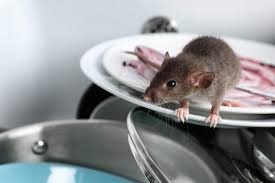Insects come in countless shapes and sizes—each with different behaviors, lifecycles, and risks. While general pest control can help keep a wide range of bugs at bay, sometimes a more focused approach is necessary. That’s where insect-specific treatments come in—targeted solutions designed to eliminate a particular insect species efficiently and effectively. These treatments go beyond broad-spectrum sprays and offer custom strategies to get rid of stubborn or dangerous pests for good.
What Are Insect-Specific Treatments?
Insect-specific treatments are pest control solutions customized to deal with a single insect problem, such as termites, bed bugs, mosquitoes, fleas, ants, cockroaches, or wasps. Unlike general treatments, these strategies involve deeper inspections, species identification, and tailored application methods. The goal is to attack the infestation at its source—destroying not just visible insects but also their colonies, breeding sites, and eggs.
Why Targeted Treatments Matter
Not all insects respond to the same control methods. A spray that kills ants may do nothing to stop bed bugs. Likewise, cockroaches can hide in cracks that general treatments miss, while termites may operate entirely out of sight within wooden beams. Without targeted treatment, infestations can linger or return, causing long-term frustration and potential damage.
Common Insect-Specific Treatments
Here are some of the most frequently used insect-specific approaches:
1. Termite Treatments
Termites require aggressive methods such as liquid soil treatments, baiting systems, or fumigation to destroy colonies hidden beneath the ground or inside walls. Because they cause structural damage, termite treatments focus on both extermination and long-term prevention.
2. Bed Bug Extermination
Bed bugs are notorious for hiding in mattresses, furniture, and clothing. Heat treatments, steam applications, and chemical sprays are used to kill bed bugs at all life stages. Multiple treatments and careful follow-up are often required for complete elimination.
3. Ant Control
For ants, the focus is on destroying the entire colony, not just the visible trail. Professionals use gel baits and granular insecticides placed near entry points and food sources to target workers and eliminate the queen.
4. Cockroach Elimination
Roaches are hardy pests that require a combination of gel baits, growth regulators, and sanitation strategies. Insect-specific treatments aim to reach hidden nests and interrupt the reproductive cycle.
5. Mosquito Control
For mosquitoes, the strategy includes treating breeding grounds like standing water, using fogging or misting systems, and applying larvicides. These treatments reduce mosquito populations while also lowering the risk of disease transmission.
6. Wasp and Hornet Removal
Stinging insects like wasps and hornets are dangerous and aggressive. Experts use dusts or sprays directly into nests, often at night, when activity is lowest. Safety gear and specialized tools are essential.
Benefits of Insect-Specific Treatments
- Higher success rates and faster results
- Reduced chemical usage by targeting the pest directly
- Long-lasting protection when combined with prevention strategies
- Safer application tailored to the insect and the environment
Final Thoughts
Insect-specific treatments provide the precision and power needed to tackle stubborn infestations head-on. Instead of relying on general solutions, these focused treatments offer better outcomes and longer-lasting relief. If you’re dealing with a particular insect problem, don’t settle for guesswork—choose expert help that delivers proven, pest-specific results.







